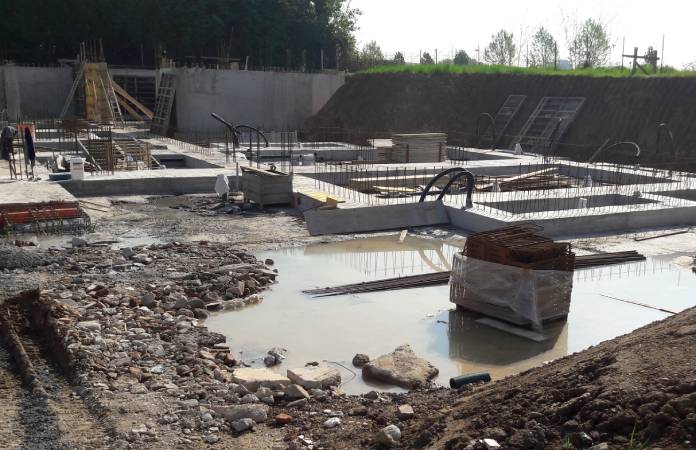Water is one of the most destructive forces on a construction site. It can undermine foundations, wash away soil, and damage materials and equipment. That’s why it’s so important to know what measures to implement to keep water at bay when prepping a construction site. Here are a few things you can do to achieve this.
Create a Perimeter Drainage System
One of the best ways to keep water away from your construction site is to create a perimeter drainage system. This involves excavating a trench around the perimeter of the site and installing drains or pipes to carry water away from the area. This can work well as long as you won’t be diverting water onto your neighboring occupied or active construction properties.
Using Barriers
Another effective way to keep water at bay is to use barriers such as sandbags, geotextile fabric, or silt fences. These can be placed around the perimeter of the site or in areas where you’re particularly worried about water damage. The pros of this are that it’s a relatively low-cost solution and it can be easily removed once the construction work is finished. The cons are that it can be labor-intensive to set up and it may need to be regularly maintained or replaced.
Dewatering Pumps
If you’re working on a particularly waterlogged construction site, you may need to use dewatering pumps to remove water from the area. These pumps can be used to lower the water table and make the ground more stable for construction. Their size and power will depend on the size of your construction site and the level of water you need to remove.
Dewatering pumps are often used as a last resort, as they can be expensive to operate and can damage the environment if not used properly. They should be used under the supervision of a qualified engineer so that they are used safely and effectively.
Raise the Level of the Site
If you’re worried about ongoing water damage, another option is to raise the level of the construction site. This involves excavating the perimeter of the site to create a barrier, then backfilling it with soil or sand. This will help to protect the site from flooding and can also be used to create a perimeter drainage system (if you excavate the trench deep enough). This is an especially good option if you’re building in an area that’s prone to flooding and needs a permanent drainage solution.
These are just a few of the ways you can keep water at bay when prepping a construction site. By taking these measures, you can help to protect your investment from water damage and avoid costly delays.


























































